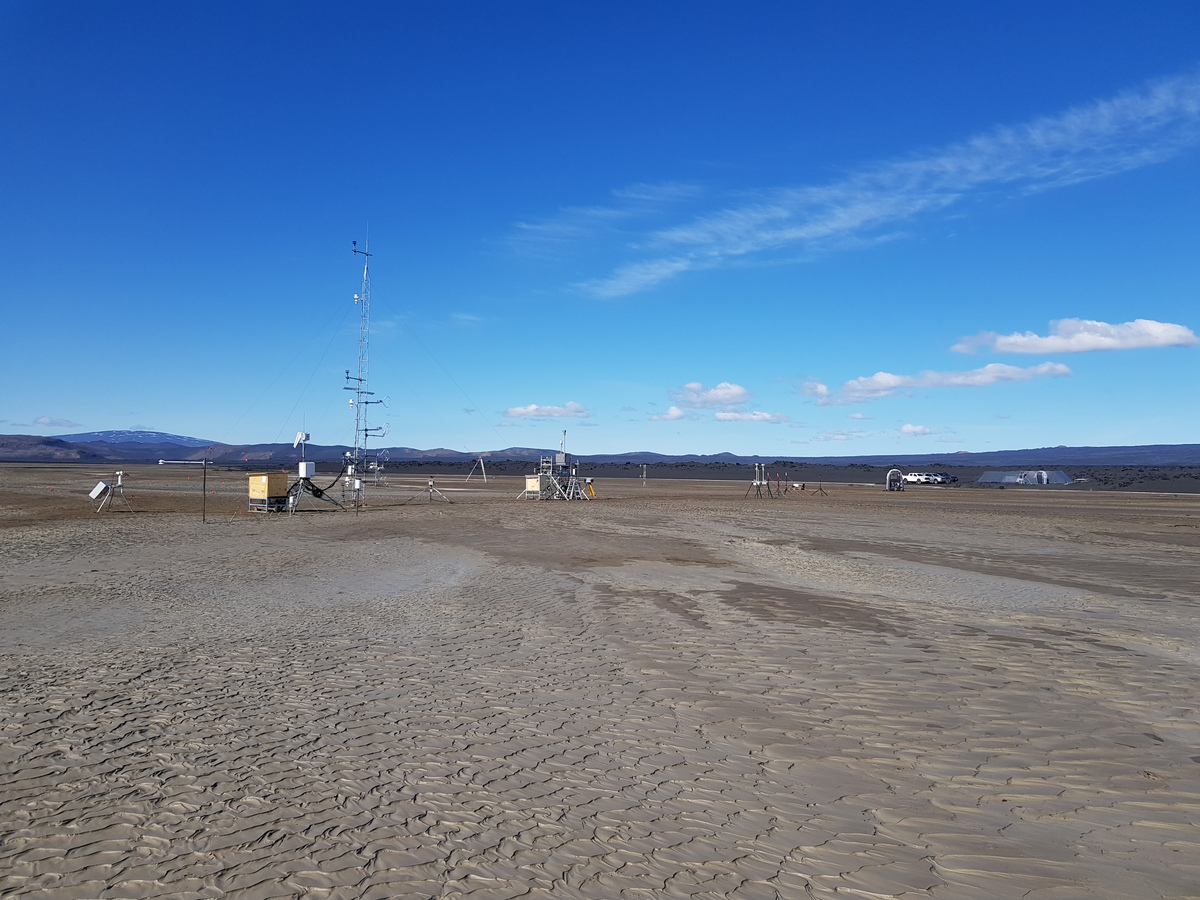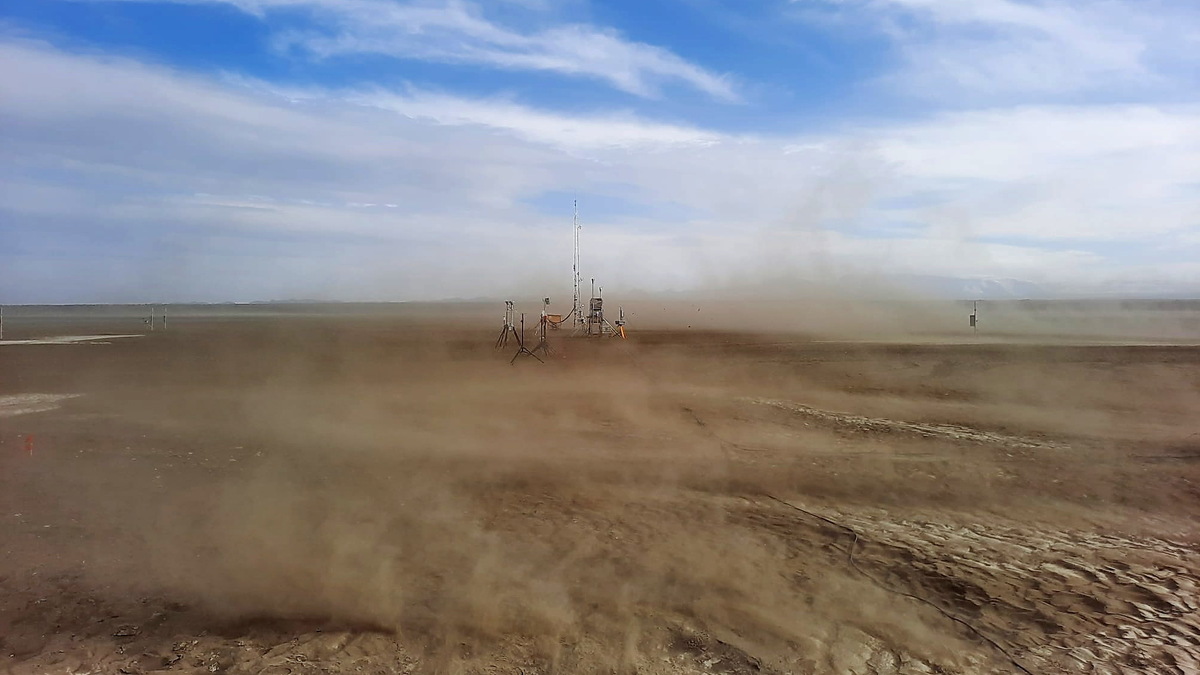Quantifying ice-nucleating particles in Iceland’s desert
The emission of natural dust particles into the atmosphere from the high-latitude/cold regions is fast becoming more important than previously considered. A recent review shows that larger land surface areas contribute to these dust emissions, which are mainly driven by land use and climate changes. These emitted dust particles can serve as ice-nucleating particles (INPs), hence, contributing to the overall INP budget of clouds in the high-latitude regions.
To quantify the contributions of INPs from such regions, we collaborated with an international team comprising scientists from all over Europe and the USA to measure first-hand the ice-nucleating particles from a cold desert in Iceland. The field measurement campaign is generously funded by the German Research Foundation (DFG) and the European Research Council through the HiLDA and FRAGMENT projects, respectively.
IMK-AAF deployed a state-of-the-art mobile integrated filter sampler to collect dust particles on treated nucleopore filters, which will later be transported to our laboratories for ice nucleation experiments. In addition, we collected surface and airborne samples for comparative investigations too. Amongst other objectives, we are particularly interested in studying the ice nucleation properties of freshly emitted dust samples from sediments of such complex terrain. We plan to conduct the ice nucleation experiments with our well-characterized and calibrated Ice Nucleation Spectrometer of the Karlsruhe Institute of Technology (INSEKT).
Potentially, the results from this field campaign will help us to understand the properties of INPs from high-latitude regions and how they contribute to the INP budget of clouds in the region, which in turn may influence precipitation and the climate conditions in such regions.
This unique field measurements campaign ran for two months (August and September 2021) in the Dyngjusandur desert in Iceland. The measurement site is surrounded by lava fields characterised by deposits from previous volcanic eruptions.


